
|
Astronomy Picture Of the Day (APOD)
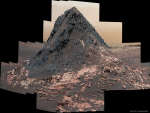 Ireson Hill on Mars
Ireson Hill on Mars
19.07.2017
What created this unusual hill on Mars? Its history has become a topic of research, but its shape and two-tone structure makes it one of the more unusual hills that the robotic Curiosity rover on Mars has rolled near. Dubbed Ireson Hill, the mound rises about 5 meters high and spans about 15 meters across.
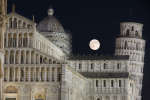 Thunder Moon over Pisa
Thunder Moon over Pisa
18.07.2017
What's wrong with this picture? If you figure it out, you may then realize where the image was taken. The oddity lies actually in one of the buildings -- it leans. The Leaning Tower of Pisa has been an iconic legend since shortly after its construction began in the year 1173.
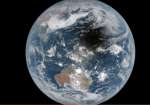 Moon Shadow versus Sun Reflection
Moon Shadow versus Sun Reflection
17.07.2017
What are those lights and shadows crossing the Earth? As the featured five-second time-lapse video progresses, a full day on planet Earth is depicted as seen from Japan's Himawari-8 satellite in geostationary orbit high above the Pacific Ocean.
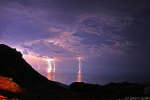 Lightning Eclipse from the Planet of the Goats
Lightning Eclipse from the Planet of the Goats
16.07.2017
Thunderstorms almost spoiled this view of the spectacular 2011 June 15 total lunar eclipse. Instead, storm clouds parted for 10 minutes during the total eclipse phase and lightning bolts contributed to the dramatic sky.
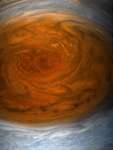 Close up of the Great Red Spot
Close up of the Great Red Spot
15.07.2017
On July 11, the Juno spacecraft once again swung near to Jupiter's turbulent cloud tops in its looping 53 day orbit around the Solar System's ruling gas giant. About 11 minutes after perijove 7, its closest approach on this orbit, it passed directly above Jupiter's Great Red Spot.
 NGC 4449: Close up of a Small Galaxy
NGC 4449: Close up of a Small Galaxy
14.07.2017
(xxxedit and linkxxx) Grand spiral galaxies often seem to get all the glory. Their young, blue star clusters and pink star forming regions along sweeping spiral arms are guaranteed to attract attention. But small irregular galaxies form stars too, like NGC 4449, about 12 million light-years distant.
 Full Moon and Boston Light
Full Moon and Boston Light
13.07.2017
This well-planned telephoto timelapse captures July's Full Moon rise across outer Boston Harbor, Massachusetts, planet Earth. In the foreground, the historic terrestrial beacon is known as Boston Light. July's Full Moon...
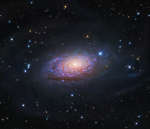 Messier 63: The Sunflower Galaxy
Messier 63: The Sunflower Galaxy
12.07.2017
A bright spiral galaxy of the northern sky, Messier 63 is about 25 million light-years distant in the loyal constellation Canes Venatici. Also cataloged as NGC 5055, the majestic island universe is nearly 100,000 light-years across. That's about the size of our own Milky Way Galaxy.
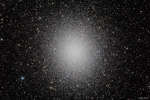 Star Cluster Omega Centauri in HDR
Star Cluster Omega Centauri in HDR
11.07.2017
Behold the largest ball of stars in our galaxy. Omega Centauri is packed with about 10 million stars, many older than our Sun and packed within a volume of only about 150 light-years in diameter.
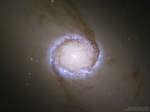 Spiral Galaxy NGC 1512: The Nuclear Ring
Spiral Galaxy NGC 1512: The Nuclear Ring
10.07.2017
What's happening around the center of this spiral galaxy? Seen in total, NGC 1512 appears to be a barred spiral galaxy -- a type of spiral that has a straight bar of stars across its center. This bar crosses an outer ring, though, a ring not seen as it surrounds the pictured region.
|
January February March April May June July August September October November December |
|||||||||||||||||||||||||||||||||||||||||||||||||